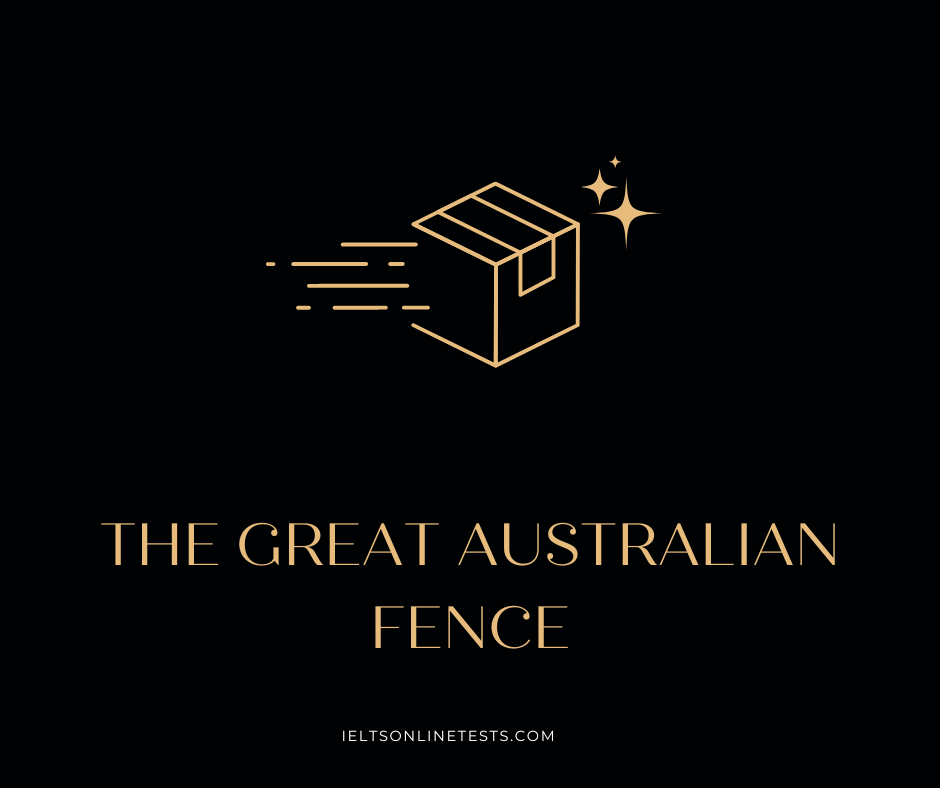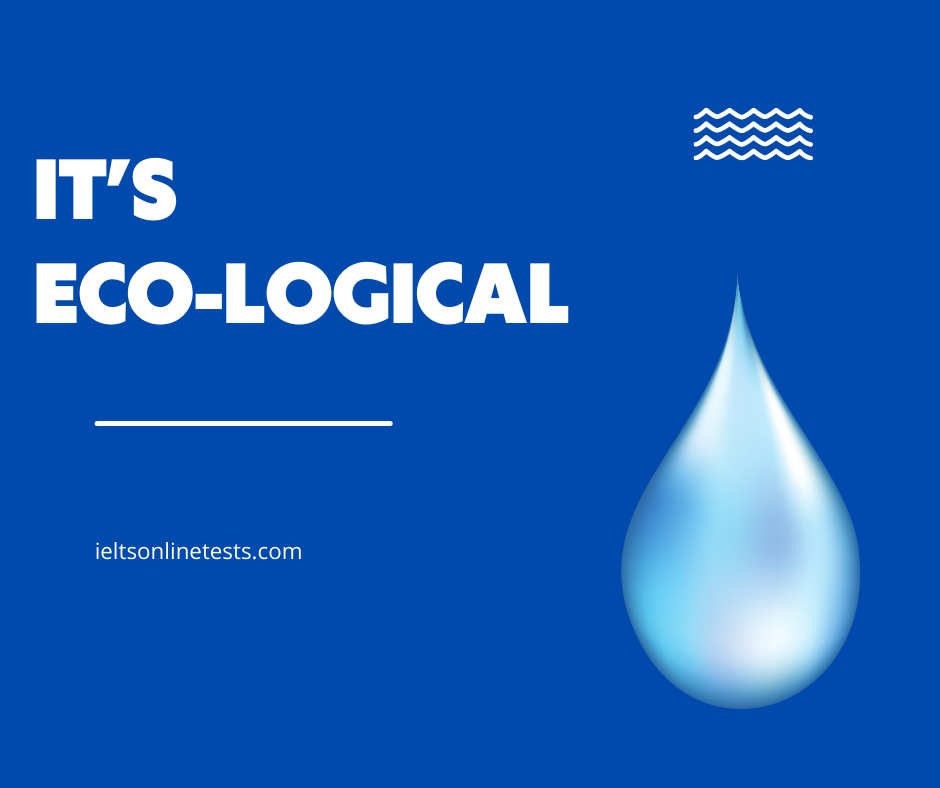
IELTS Practice Tests Plus Volume 1
- Đăng ngày: 13 Dec 2017
- Tests taken: 588,806
Đáp án
Part 1: Question 1 - 13
- 1 D
- 2 B
- 3 C
- 4 A
- 5 NO
- 6 YES
- 7 NO
- 8 YES
- 9 NOT GIVEN
- 10 YES
- 11 NOT GIVEN
- 12 B
- 13 A
Part 2: Question 14 - 27
- 14 YES
- 15 YES
- 16 NOT GIVEN
- 17 NO
- 18 NO
- 19 NOT GIVEN
- 20 22 B,D,E
- 23 24 A,D
- 25 World Tourism Organization/Organisation
- 26 city entrepreneurs
- 27 1992 Earth Summit
Part 3: Question 28 - 40
- 28 ability
- 29 note
- 30 relative
- 31 music lessons
- 32 tone
- 33 words
- 34 pitch
- 35 cultures
- 36 D
- 37 B
- 38 A
- 39 E
- 40 C
Giải thích chi tiết
Questions 1-4
Choose the appropriate letters A-D and write them in boxes 1-4 on your answer sheet.
Why was the fence built?
- A
- B
- C
- D
Keywords in Questions | Similar words in Passage |
Q1. Why was the fence built? A. to separate the sheep from the cattle B. to stop the dingoes from being slaughtered by farmers C. to act as a boundary between properties D. to protect the Australian wool industry | A war has been going on for almost a hundred years between the sheep farmers of Australia and the dingo, Australia’s wild dog. To protect their livelihood, the farmers built a wire fence, 3,307 miles of continuous wire mesh, |
After reading paragraph 1, we could not find any information relating to option A, B and C “Wool industry” refers to “livelihood of sheep farmers” Thus, the correct answer for Q1 should be “D” | |
On what point do the conservationists and politicians agree?
- A
- B
- C
- D
Keywords in Questions | Similar words in Passage |
Q2. On what point do the conservationists and politicians agree? A. Wool exports are vital to the economy. B. The fence poses a threat to the environment. C. The fence acts as a useful frontier between states. D. The number of dogs needs to be reduced. | Never mind that more and more people - conservationists, politicians, taxpayers and animal lovers - say that such a barrier would never be allowed today on ecological grounds. |
After reading paragraph 2, all keywords are appeared in the sentence. “A threat” and “a barrier never be allowed” have the same meaning in this context. “Environment” and “ecological grounds” are interchangeable in this case. Thus, the correct answer for Q2 should be “B” | |
Why did the author visit Australia?
- A
- B
- C
- D
Keywords in Questions | Similar words in Passage |
Q3. Why did the author visit Australia? A. to study Australian farming methods B. to investigate how the fence was constructed C. because he was interested in life around the fence D. because he wanted to learn more about the wool industry | To appreciate this unusual outback monument and to meet the people whose livelihoods depend on it, I spent part of an Australian autumn travelling the wire. |
After reading paragraph 3, we could not find any information relating to option A, B and D. Option C should be the correct answer because: “Life around the fence” and “meet people whose livelihoods depend on it (fence)” have the same meaning in this context. “Interested in” and “appreciate” have the same meaning in this context. Thus, the correct answer for Q3 should be “C” | |
How does the author feel about the fence?
- A
- B
- C
- D
Keywords in Questions | Similar words in Passage |
Q4. How does the author feel about the fence? A. impressed B. delighted C. shocked D. annoyed | For most of its prodigious length, this epic fence winds like a river across a landscape that, unless a big rain has fallen, scarcely has rivers. |
After reading paragraph 4, we could easily choose Option A to be the correct answer because: “Impressed” and “prodigious” are interchangeable in this case. Thus, the correct answer for Q4 should be “A” | |
Questions 5-11
Do the following statements agree with the information given in Reading Passage 1?
In boxes 5-11 on your answer sheet write
| YES | if the statement agrees with the views of the writer |
| NO | if the statement contradicts the views of the writer |
| NOT GIVEN | if it is impossible to say what the writer thinks about this |
5 The fence serves a different purpose in each state.
6 The fence is only partially successful.
7 The dingo is indigenous to Australia.
8 Dingoes have flourished as a result of the sheep industry.
9 Dingoes are known to attack humans.
10 Kangaroos have increased in number because of the fence.
11 The author does not agree with the culling of kangaroos.
- 5 Answer: NO
Keywords in Questions
Similar words in Passage
Q5. The fence serves a different purpose in each state.
It’s known by different names in different states: the Dog Fence in South Australia, the Border Fence in New South Wales and the Barrier Fence in Queensland. I would call it simply the Fence .
After reading paragraph 3, we could find that “the fence only have different names in different states”, not different purpose in each state.
Thus, the correct answer for Q5 should be “NO”
- 6 Answer: YES
Keywords in Questions
Similar words in Passage
Q6. The fence is only partially successful.
What is this creature that by itself threatens an entire industry, inflicting several millions of dollars of damage a year despite the presence of the world’s most obsessive fence?
After reading paragraph 6, we could see that “partially successful” refers to “the presence of the world’s most obsessive fence”.
Thus, the correct answer for Q6 should be “YES”
- 7 Answer: NO
Keywords in Questions
Similar words in Passage
Q7. The dingo is indigenous to Australia
…that the dingo was introduced to Australia more than 3,500 years ago probably with Asian seafarers who landed on the north coast.
After reading paragraph 6,
“Indigenous” and “was introduced to” contradict with each other in this case.
Thus, the correct answer for Q7 should be “NO”
- 8 Answer: YES
Keywords in Questions
Similar words in Passage
Q8. Dingoes have flourished as a result of the sheep industry.
is estimated that since sheep arrived in Australia, dingo numbers have increased a hundredfold
After reading paragraph 8,
“Sheep industry” and “sheep arrived in Australia” have the same meaning in this case.
“Flourished” refers to “ numbers have increased a hundredfold”
Thus, the correct answer for Q8 should be “YES”
- 9 Answer: NOT GIVEN
Keywords in Questions
Q9. Dingoes are known to attack humans.
After reading passage 1, we could not find any information confirming that “Dingoes are known to attack humans”
Thus, the correct answer for Q9 should be “NOT GIVEN”
- 10 Answer: YES
Keywords in Questions
Similar words in Passage
Q10. Kangaroos have increased in number because of the fence
Now they are ubiquitous for without a native predator the kangaroo population has exploded inside the Fence
After reading paragraph 10,
“Increased in number” and “ubiquitous” have the same meaning in this case.
Thus, the correct answer for Q10 should be “YES”
- 11 Answer: NOT GIVEN
Keywords in Questions
Q11. The author does not agree with the culling of kangaroos
After reading passage 1, we could not find any information confirming that “The author does not agree with the culling of kangaroos”
Thus, the correct answer for Q11 should be “NOT GIVEN”
Questions 12-13
Choose the appropriate letters A-D and write them in boxes 12-13 on your answer sheet.
When did the authorities first acknowledge the dingo problem?
- A
- B
- C
- D
Keywords in Questions | Similar words in Passage |
Q12. When did the authorities first acknowledge the dingo problem? A. 1788 B. 1830 C. 1845 D. 1960 | Dingoes officially became outlaws in 1830 when governments placed a bounty on their heads. |
After reading paragraph 7, “First acknowledge” and “officially became outlaws” have the same meaning in this case. Thus, the correct answer for Q12 should be “B” | |
How do the park officials feel about the fence?
- A
- B
- C
- D
Keywords in Questions | Similar words in Passage |
Q13. How do the park officials feel about the fence? A. philosophical B. angry C. pleased D. proud | Park officials, who recognize that the fence is to blame, respond to the excess of kangaroos by saying The fence is there, and we have to live with it. |
After reading passage 1, we could easily rule out option B, C and D as the correct answer. “Philosophical” and “blame” have the same meaning in this case. Thus, the correct answer for Q13 should be “A” | |
Reading Passage 1
You should spend about 20 minutes on Questions 1-13. which are based on Reading Passage 1 below.

The Great Australian Fence
A war has been going on for almost a hundred years between the sheep farmers of Australia and the dingo, Australia’s wild dog. To protect their livelihood, the farmers built a wire fence, 3,307 miles of continuous wire mesh, reaching from the coast of South Australia all the way to the cotton fields of eastern Queensland, just short of the Pacific Ocean.
The Fence is Australia’s version of the Great Wall of China, but even longer, erected to keep out hostile invaders, in this case hordes of yellow dogs. The empire it preserves is that of the woolgrowers, sovereigns of the world’s second largest sheep flock, after China’s - some 123 million head - and keepers of a wool export business worth four billion dollars. Never mind that more and more people - conservationists, politicians, taxpayers and animal lovers - say that such a barrier would never be allowed today on ecological grounds. With sections of it almost a hundred years old, the dog fence has become, as conservationist Lindsay Fairweather ruefully admits, ‘an icon of Australian frontier ingenuity’.
To appreciate this unusual outback monument and to meet the people whose livelihoods depend on it, I spent part of an Australian autumn travelling the wire. It’s known by different names in different states: the Dog Fence in South Australia, the Border Fence in New South Wales and the Barrier Fence in Queensland. I would call it simply the Fence.
For most of its prodigious length, this epic fence winds like a river across a landscape that, unless a big rain has fallen, scarcely has rivers. The eccentric route, prescribed mostly by property lines, provides a sampler of outback topography: the Fence goes over sand dunes, past salt lakes, up and down rock-strewn hills, through dense scrub and across barren plains.
The Fence stays away from towns. Where it passes near a town, it has actually become a tourist attraction visited on bus tours. It marks the traditional dividing line between cattle and sheep. Inside, where the dingoes are legally classified as vermin, they are shot, poisoned and trapped. Sheep and dingoes do not mix and the Fence sends that message mile after mile.
What is this creature that by itself threatens an entire industry, inflicting several millions of dollars of damage a year despite the presence of the world’s most obsessive fence? Cousin to the coyote and the jackal, descended from the Asian wolf, Cam's lupus dingo is an introduced species of wild dog. Skeletal remains indicate that the dingo was introduced to Australia more than 3,500 years ago probably with Asian seafarers who landed on the north coast. The adaptable dingo spread rapidly and in a short time became the top predator, killing off all its marsupial competitors. The dingo looks like a small wolf with a long nose, short pointed ears and a bushy tail. Dingoes rarely bark; they yelp and howl. Standing about 22 inches at the shoulder - slightly taller than a coyote - the dingo is Australia’s largest land carnivore.
The woolgrowers’ war against dingoes, which is similar to the sheep ranchers’ rage against coyotes in the US, started not long after the first European settlers disembarked in 1788, bringing with them a cargo of sheep. Dingoes officially became outlaws in 1830 when governments placed a bounty on their heads. Today bounties for problem dogs killing sheep inside the Fence can reach $500. As pioneers penetrated the interior with their flocks of sheep, fences replaced shepherds until, by the end of the 19th century, thousands of miles of barrier fencing crisscrossed the vast grazing lands.
The dingo started out as a quiet observer,’ writes Roland Breckwoldt, in A Very Elegant Animal: The Dingo, ‘but soon came to represent everything that was dark and dangerous on the continent.’ It is estimated that since sheep arrived in Australia, dingo numbers have increased a hundredfold. Though dingoes have been eradicated from parts of Australia, an educated guess puts the population at more than a million.
Eventually government officials and graziers agreed that one well-maintained fence, placed on the outer rim of sheep country and paid for by taxes levied on woolgrowers, should supplant the maze of private netting. By 1960, three states joined their barriers to form a single dog fence.
The intense private battles between woolgrowers and dingoes have usually served to define the Fence only in economic terms. It marks the difference between profit and loss. Yet the Fence casts a much broader ecological shadow for it has become a kind of terrestrial dam, deflecting the flow of animals inside and out. The ecological side effects appear most vividly at Sturt National Park. In 1845, explorer Charles Sturt led an expedition through these parts on a futile search for an inland sea. For Sturt and other early explorers, it was a rare event to see a kangaroo. Now they are ubiquitous for without a native predator the kangaroo population has exploded inside the Fence. Kangaroos are now cursed more than dingoes. They have become the rivals of sheep, competing for water and grass. In response state governments cull* more than three million kangaroos a year to keep Australia’s national symbol from overrunning the pastoral lands. Park officials, who recognise that the fence is to blame, respond to the excess of kangaroos by saying The fence is there, and we have to live with it.














Bình luận